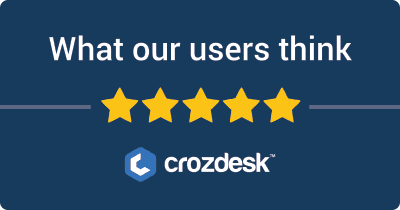
Asana and ClickUp are two leading task management tools designed to enhance productivity and streamline project workflows. Both platforms aim to help teams organize their work, track progress, and improve collaboration. Users are often drawn to Asana for its user-friendly interface and strong integration capabilities, while ClickUp is favored for its extensive customization options and all-in-one functionality.
When choosing between Asana and ClickUp, users typically consider several key comparison aspects:
-
Features: Both tools offer task creation, project tracking, and collaboration features, but they differ in specific offerings like time tracking, goal setting, and automation capabilities.
-
Pricing: Understanding the cost structure is vital. Asana provides a tiered pricing model based on features, while ClickUp offers a more flexible approach with varied plans suitable for different budgets.
-
Ease of Use: User experience can significantly influence productivity. Asana is often praised for its intuitive design, while ClickUp’s plethora of customization options may have a steeper learning curve.
-
Integrations: Both platforms support integrations with numerous third-party applications, but their compatibility and efficiency can vary, affecting overall user experience.
By examining these aspects, users can make an informed decision that aligns with their project management needs.
Asana VS ClickUp: Which tool is the most popular?
| Tool | Number of Reviews | Average Rating | Positive Reviews | Neutral Reviews | Negative Reviews |
|---|---|---|---|---|---|
| ClickUp | 76 | 4.17 | 64 | 1 | 11 |
| Asana | 85 | 3.62 | 63 | 4 | 18 |
ClickUp is the most popular tool based on average user rating (4.17) and a healthy number of positive reviews (64). Asana, while having a higher total number of reviews (85), shows a lower average rating (3.62) and slightly fewer positive reviews (63), indicating less overall satisfaction compared to ClickUp.


Asana and ClickUp: Quick Comparison Overview
| Feature/Aspect | Ahrefs | SEMrush |
|---|---|---|
| Primary Features | – Site Explorer – Keyword Explorer – Backlink Checker – Content Explorer – Rank Tracker |
– Keyword Research – Site Audit – Position Tracking – Content Analyzer – Marketing Insights |
| Target Audience | – SEO professionals – Digital marketers – Agencies focusing on content marketing and backlink analysis |
– Digital marketers – SEO experts – Content marketers – Social media marketers and PPC specialists |
| Main Advantages | – Robust backlink analysis – Comprehensive keyword data – Intuitive user interface – Constantly updated index |
– All-in-one digital marketing tool – Extensive competitor analysis – Wide array of tools for SEO and PPC – Integrated social media management |
| Core Value Proposition | Focused on providing in-depth SEO insights, particularly strengths in backlink profiles and organic keyword rankings. Ideal for users prioritizing content strategy and link-building efforts. | Offers a holistic view of digital marketing, making it easier to manage all aspects of online presence through an extensive range of tools for SEO, PPC, and social media marketing. |
| Ideal Use Cases | – Conducting comprehensive link audits – Developing effective content strategies – Tracking backlinks and organic rankings – Keyword planning for SEO campaigns |
– Managing and optimizing PPC campaigns – Conducting competitive analysis for market positioning – Comprehensive content analytics and SEO tracking – Social media metrics and management |
Most liked vs most disliked features of Asana and ClickUp
| Feature | Asana | ClickUp |
|---|---|---|
| Most Liked Features | – Effectively organizes projects and facilitates task management in team settings. – Supports collaboration by clearly defining roles. – Seamless functionality across devices. – Prompt and helpful support responses. – High level of customization for adapting workflows. |
– Highly customizable with tailored fields, dashboards, and views. – Effective project management with task tracking. – Streamlined workflows through automation features. – Significant integration capabilities with other applications. – Intuitive overall user experience for managing projects. |
| Most Disliked Features | – Desire for greater customization in ‘My Tasks’ view. – Lack of intuitive navigation for file storage. – Requests for automatic assignment of due dates. – Some users face a learning curve to adapt. – Suggestion for more integrated views combining media and notes. |
– Reports of slow loading times and laggy performance on desktop. – Overwhelming for new users due to numerous features. – Mobile app lacks depth and has usability issues. – Extensive task creation options can cause confusion. – Overwhelming notification settings may lead to missed updates. |
Key Features of Asana vs ClickUp
Certainly! Here’s a comparison of the key features of Asana and ClickUp as task management tools, highlighting the benefits for users and unique aspects each platform offers.
Asana Features:
-
Task Management:
- Benefit: Users can create, assign, and prioritize tasks. The intuitive interface allows for easy task tracking, ensuring that team members stay on top of their responsibilities.
- Unique Aspect: Asana’s task views (list, boards, calendar) provide diverse visualization, catering to different workflow preferences.
-
Project Templates:
- Benefit: Users can use pre-built templates to kickstart their projects quickly, saving time on setup and ensuring consistency across projects.
- Unique Aspect: Asana offers a wide range of customizable templates for various industries, making it easier to adopt best practices.
-
Timeline View:
- Benefit: The timeline view allows users to see project deadlines and dependencies visually, enhancing planning and scheduling.
- Unique Aspect: Asana’s timeline feature integrates Gantt charts, which can help users understand project progression visually and make adjustments as needed.
-
Team Collaboration:
- Benefit: Features like comments, file attachments, and mentions foster communication directly within tasks, reducing reliance on external messaging tools.
- Unique Aspect: Asana’s ability to integrate with other tools (like Slack and Microsoft Teams) makes it versatile for collaboration across different platforms.
-
Reporting and Analytics:
- Benefit: Users can track project progress through dashboards and reporting tools, enabling data-driven decision-making.
- Unique Aspect: Asana offers customizable reporting to fit specific metrics that are important to teams, which can enhance accountability.
ClickUp Features:
-
Customizable Views:
- Benefit: ClickUp allows users to switch between list, board, calendar, and even Gantt views to find the way that works best for them.
- Unique Aspect: The highly customizable interface can be tailored to each user’s preferences, making it easier to manage tasks in a preferred format.
-
Task Attributes:
- Benefit: Users can add various attributes to tasks, such as priorities, tags, or custom fields, ensuring that all relevant information is accessible at a glance.
- Unique Aspect: ClickUp provides an extensive range of custom attributes that users can define, allowing for highly specialized task tracking.
-
Goal Tracking:
- Benefit: Users can set goals and track their progress alongside tasks, ensuring that individual or team objectives align with daily activities.
- Unique Aspect: ClickUp’s goals feature allows users to measure performance against goals directly within the task management tool, promoting a results-oriented approach.
-
Integrations and Automations:
- Benefit: ClickUp offers a range of integrations with other apps and automated workflows, which can streamline repetitive tasks and enhance productivity.
- Unique Aspect: The platform’s automation capabilities can handle complex workflows, reducing manual effort and increasing efficiency.
-
Time Tracking:
- Benefit: Users can track how much time is spent on tasks, which helps in managing workload and understanding where efforts are concentrated.
- Unique Aspect: ClickUp has built-in time tracking tools, which eliminates the need for third-party time tracking apps, providing a seamless experience.
Summary:
In summary, both Asana and ClickUp offer robust features for task management, but they cater to different user preferences and workflows.
- Asana shines with its intuitive task management, diverse visualization options, and strong focus on collaboration and reporting.
- ClickUp, on the other hand, offers unparalleled customization, goal tracking, and automation, making it ideal for users who need more tailored solutions.
Ultimately, the choice between Asana and ClickUp will depend on the specific needs and working styles of the users and teams involved.
Asana vs ClickUp Pricing Comparison
| Feature/Plan | Asana | ClickUp |
|---|---|---|
| Free Tier | Available with basic features | Available with basic features |
| Limited to 15 users | Fully functional for unlimited users | |
| Includes tasks, projects, and basic dashboard | Unlimited projects, tasks, and docs | |
| Time Tracking, Integrations, and Collaboration tools | ||
| Premium Plan | Monthly: $13.49/user | Monthly: $5/user |
| Annual: $10.99/user (billed annually) | Annual: $2/user (billed annually) | |
| Adds timeline, reporting, and advanced search | Adds time tracking, goals, and custom fields | |
| Automation rules (limited) | Supports automation and integrations | |
| Business Plan | Monthly: $30.49/user | Monthly: $12/user |
| Annual: $24.99/user (billed annually) | Annual: $9/user (billed annually) | |
| Advanced features like portfolios, custom rules, and proofing | Advanced features like timelines, goals, and custom roles | |
| More reporting options | Access to all integrations and automation | |
| Enterprise Plan | Custom pricing | Custom pricing |
| Includes advanced administration features | Enterprise-specific features, enhanced security | |
| Premium & Business features included | Custom permissions and dedicated success manager | |
| SLA for uptime and support | ||
| Free Trial | 30-day free trial (Premium & Business) | 14-day free trial (all features) |
| Special Discounts | 10% off for annual billing | 15% off for annual billing |
Main Differences:
- User Pricing: Asana has a higher per-user cost across tiers compared to ClickUp, especially in the Premium and Business plans.
- Free Tier Accessibility: ClickUp allows unlimited users in their free tier, while Asana limits usage to 15 users.
- Features Comparisons: ClickUp includes more robust features at lower pricing tiers, such as time tracking and goals, which Asana only offers in higher tiers.
- Discounts on Annual Billing: Both platforms offer discounts for annual subscriptions, but ClickUp provides a more substantial discount percentage.
- Trial Periods: Asana offers a longer trial period for its higher tiers compared to ClickUp’s standard trial length.
Support Options Comparison: Asana vs ClickUp
| Support Options | Asana | ClickUp |
|---|---|---|
| Live Chat | Not available | Available during business hours |
| Phone Support | Not available | Available for paid plans only |
| Documentation | Extensive knowledge base with articles, guides, and community forums | Comprehensive help center with articles, FAQs, and guides |
| Webinars | Yes, offers live and on-demand webinars | Yes, provides both live and recorded tutorials |
| Tutorials | Video tutorials available | Extensive training resources, including written and video tutorials |
| Community Support | Active community forum for discussions | Community forum for user engagement and tips |
| Email Support | Available for Premium and Business users | Available for all users |
This comparison highlights the key support offerings from Asana and ClickUp, demonstrating ClickUp’s more robust live support options, while both platforms provide substantial documentation and additional learning resources.
Unique Features of Asana Vs ClickUp
| Feature | Asana | ClickUp | Added Value and Importance |
|---|---|---|---|
| Timeline View | Offers a Gantt-style timeline feature which allows users to visualize project timelines and dependencies. | Gantt charts integrated with task management, along with a "Box View" for project status. | Visual representation of tasks over time helps teams manage deadlines and task dependencies efficiently. This is crucial for project planning and resource allocation. |
| Workload Management | Provides a dedicated workload view to assess team capacity and workload across projects. | Resource management tools that track time spent on tasks and allocation of team resources. | Helps in balancing workloads among team members, preventing burnout, and ensuring efficient use of team resources. |
| Custom Fields | Allows users to create customizable fields for tasks that can be tailored to specific project needs. | Offers a highly customizable field system for tasks, including checkboxes, dates, and texts. | Facilitates tracking specific data points unique to projects, improving clarity and organization. Custom fields enhance reporting capabilities and data tracking. |
| Integration Hub | Extensive integrations with over 200 apps including Slack, Google Drive, and Microsoft Teams. | Built-in integrations with more than 1,000 apps, along with API access for custom integrations. | The ability to connect with other tools enhances productivity by centralizing work processes and preventing tool switching. |
| Automation | Built-in automation features help streamline repetitive tasks, allowing users to set rules and triggers. | Automation capabilities include custom workflows, task assignments, and priority setting. | Automation saves time and reduces manual effort, enhancing overall efficiency and allowing teams to focus on higher-priority tasks. |
| Portfolios | Offers portfolio management to visualize projects at a high level and track progress across multiple initiatives. | Provides a centralized dashboard for all tasks, projects, and goals, including views of how they contribute to broader objectives. | Portfolio management helps project managers keep an eye on multiple projects, ensuring alignment with strategic goals and easier resource allocation. |
| Goals Tracking | Dedicated goal-setting feature allows teams to set, track, and align objectives with ongoing work. | Utilizes Objectives and Key Results (OKRs) to tie team tasks directly to broader company goals. | Ensures that all team efforts are directed towards measurable outcomes, enhancing focus and accountability across projects. |
| Reporting and Analytics | Produces advanced reporting features, including customizable dashboards and insights into team performance. | Offers detailed reporting capabilities with real-time data visualization and analytics that can be customized to show relevant KPIs. | Robust reporting tools aid in performance evaluation, helping teams identify areas for improvement and strategic adjustments. |
| Comments and Discussions | In-line comments on tasks to facilitate communication and collaboration among team members. | An integrated chat feature that allows real-time discussions on tasks and projects, enhancing collaboration. | Promotes better communication directly within the task environment, reducing the need for external communication tools and aiding in faster decision-making. |
| Mind Maps | Mind map feature for brainstorming and visualizing project ideas and tasks spatially. | Not explicitly mentioned but similar functionalities can be achieved through task dependencies and outlines. | The ability to ideate and plan visually helps in mapping out thoughts and projects systematically, which can enhance creativity and problem-solving. |
These unique features provide added value by enhancing collaboration, improving efficiency, and facilitating project management simplicity. They serve as deciding factors for teams evaluating task management tools based on their specific needs and workflows.


